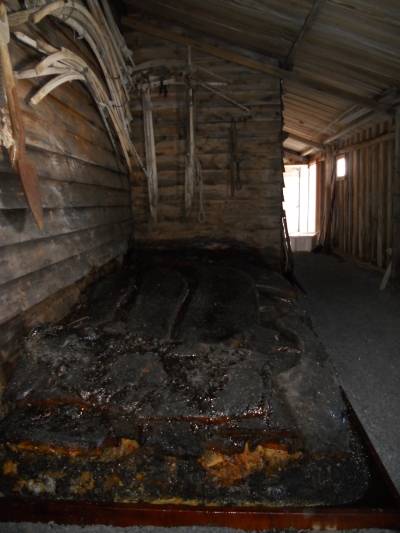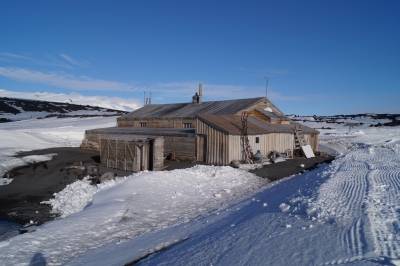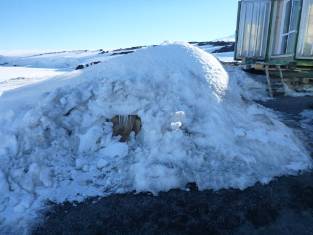Author: Karen
Date: 06 December 2012
Temperature: -3
Wind Speed: -17
Sunrise: N/A
Sunset: N/A
This week I have been helping Jana process certain artefacts. One of my tasks included hauling the Polk (similar to a sledge) up the hill from Scott’s hut to the expedition’s southern food cache in order to return previously conserved tins and boxes. Once we brushed off the new snow that had fallen overnight, Jana identified the next batch of wooden boxes for conservation (containing flour and pearl barley) and we duly put them on the Polk and transported them back to the field laboratory.
Southern food cache © AHT/Karen
The southern food cache is the largest surviving collection of food from Captain Scott’s British Antarctic Expedition (1910-1913). It includes the bulk of the stores but not glass items, which would have broken if left outside. The cache is located on the top of the ridge behind the hut, where the wind kept the supplies clearer of snow. Scott and his men moved the food cache before the second winter as during the first winter their supplies (kept near the hut) were snowed in due to the immense amount of blizzards and snow which fell in the first winter.
Jana identifying artefacts for conservation © AHT/Karen
I was amazed to see the quantity of food stored and still in situ; there were boxes of Huntley and Palmers biscuits, crates of Irvine Bros Family Lard and boxes of Fry’s Cocoa, to mention just a few. Some of the tins were in remarkable condition considering they have been open to the harsh Antarctic weather for more than 100 years. The boxes and food we collected will be conserved then returned to the cache where they were found.










